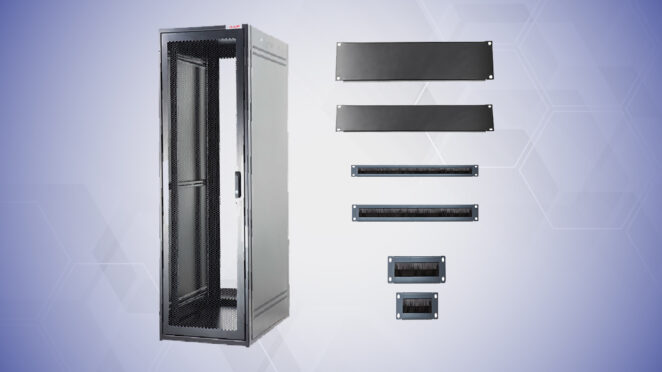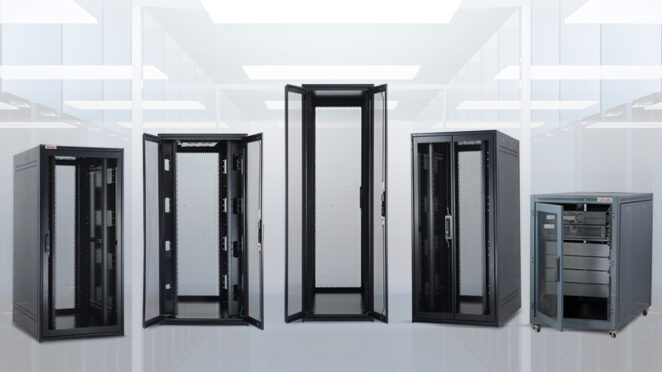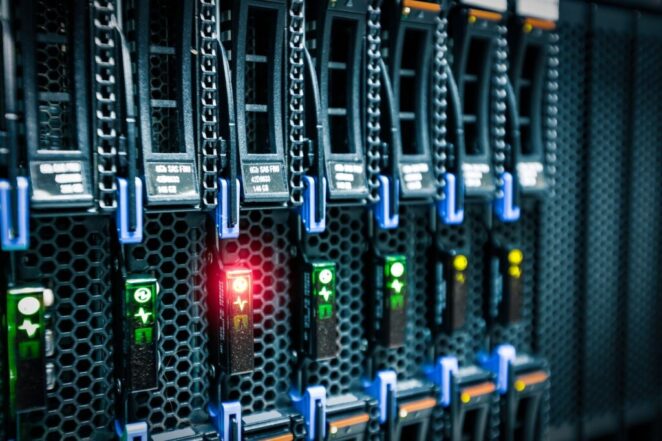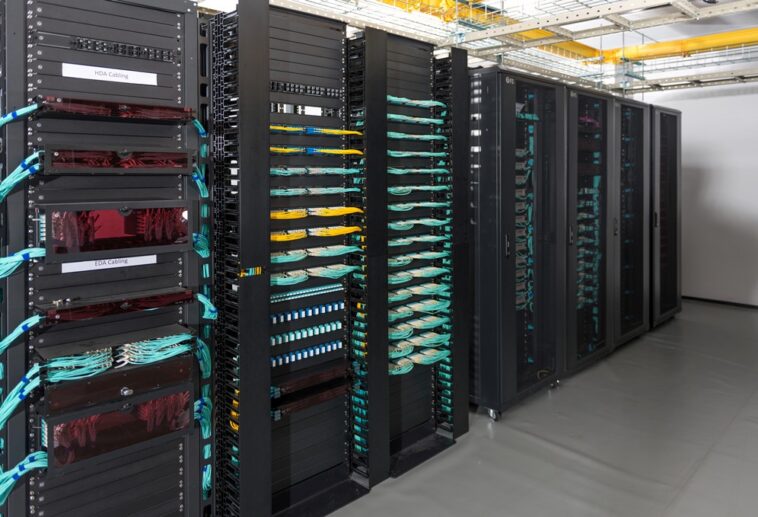Server systems are found ubiquitously nowadays. Every institution has a network system. Hardware is used to store data, quickly process complicated operations or perform other duties. However, depending on the size, server systems can comprise dozens, hundreds or even thousands of components. This is what server racks are used for. Such furniture pieces allow for compact storing of network equipment, improving space ergonomics and maintaining proper conditions for system performance.
A server rack is a multi-layer furniture piece primarily made from metal. Its body is durable and is equipped with all the functional holes and slots for equipment fastening. The main task of server furniture is to accommodate many IT devices in a small territory. Models allow housing different types of equipment, including IT production hardware, OT infrastructure, and rack accessories.
Common Kinds of Server Models

Modern producers manufacture a great variety of server products to meet the demand of system administrators. They distinguish three main types of racks in data center:
1. Open-frame racks
These constructions have vertical posts with special tech holes for equipment mounting, and that’s it. No side panels or doors are provided. Here, two classes of models are distinguished:
- 2-post racks. They are designed for small systems with a dozen active hardware. They can support little weight.
- 4-upright products. These models have 4 vertical posts, which allows for fastening more devices. Besides, technicians can attach mounting rails between uprights and install shelves. Thus, even more space will be available for equipment accommodation.
Such models can be floor-standing and mount-mounted, depending on the carrying capacity. They are popular for closed data centers.
Pros and Cons
Open-frame models have the following pros:
- Perfect air circulation. The airflow is not hindered by walls or doors, which allows the air to freely pass through equipment and cool it down.
- Ease of installation. The assembly process is quick and easy. One specialist can assemble the rack in half an hour.
- Ease of maintenance. The staff has free access to devices from all sides, which simplifies hardware replacement, repair or installation.
- Cable wiring. System administrators can wire cords in the most comfortable way.
As for drawbacks, such models are not suitable for installation in public places since the security level is low. Open racks cannot protect equipment from external impacts or unauthorized access.
Open-frame constructions also do not prevent pollution. Dust and other debris from the air freely penetrate the body and settle on hardware, which can lead to malfunction and overheating.
2. Enclosed cabinets
The second class of furniture is a closed one. Such models have removable side panels, rear and front doors and adjustable vertical mounting rails. The body is locked with stress-resistant latches and locks. When it’s needed, system administrators can unlock them.
The range of models differs greatly. There are small compact cabinets for desktop installation and huge ones for large data centers.
Advantages and Disadvantages
Enclosed cabinets have the following trumps:
- High protective features. Enclosed furniture pieces provide security against unauthorized access, unintentional damage, environmental pollution and other outside influences. Network hardware is reliably protected in such cabinets.
- Solid metal enclosures allow for installing cabinets in public places.
Yet, enclosed pieces lose in terms of cooling, cable management and maintenance. Side walls and doors hinder cable wiring, and the cabinets require the use of forced ventilation systems and fan installation.
3. Wall-mount products

This classification is distinguished due to rack’s the fastening type. Both open-frame racks and enclosed cabinets can be fastened to the wall. Limited carrying capacity is the main peculiarity of a wall server rack. Since furniture pieces are fastened with high-load dowels, the support weight is limited.
Wall-mount products are used for small server systems. They have the following benefits:
- Better room ergonomics due to freeing floor space.
- Bodies are equipped with special holes for fans, dowels and cables/
- Latches can be used to close cabinets.
Such models are perfect for installation in offices, public places and even at home.
Other Key Criteria to Assess when Selecting a Server Rack Kind
The selection process takes time. When choosing between different types of server racks, the next parameters deserve due attention:
- Size. Make sure that there will be enough place for placing all the components. Here, note that hardware should be placed loosely to prevent hindered heat exchange and overheating. It is advisable to make a layout to determine the right depth and height.
- Weight capacity. Floor-standing models can carry more devices, while the weight capacity of wall furniture is limited.
- Manageability & flexibility. Think about how cables will be wired. Will it be comfortable for technicians to maintain the devices?
- Security. Open-framed furniture is suitable for closed premises with limited access. Enclosed one can be installed everywhere due to its high security standards.
- Cooling efficiency. If you select an enclosed model, foresee a cooling strategy and leave space for fan mounting. Open-frame racks provide sufficient cooling with the natural air.
Choosing an appropriate furniture piece is a complicated responsible task. Improper choice may cause system malfunction, downtime or the need to buy more cabinets in the future.

Rack Accessories to Improve System Performance
Additional accessories can be attached to server furniture to improve its functionality. The tech staff frequently adds the following accessories:
- Power Distribution devices – designed to allocate power between devices to feed all the components of a functioning unit. Such devices stand as energy-effective solutions that allow for reducing the amount of consumed electricity for system powering.
- Battery Backup tools – prevent systems from data loss in the case of an emergency power outage and create backups.
- Device Management accessories, like KVM (keyboard, video, mouse) switches – help control and set systems remotely.
- Patch Panels – rows of connectors for different types of cables. Their application is beneficial due to the reduction of maintenance costs and achieving better wire layouts.
- Environmental Monitoring sensors – allow for controlling climatic conditions inside cabinets and data centers.
The modern market offers diverse network rack types to please the demand for modern facilities. Products differ in size, weight capacity, enclosure and purpose. The right choice of a suitable model is based on a clear understanding of server system size. This step is responsible and requires particular attention. Server furniture can be equipped with additional accessories designed to improve accessibility, control functionality and ensure effective space allocation.




